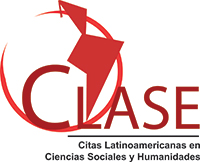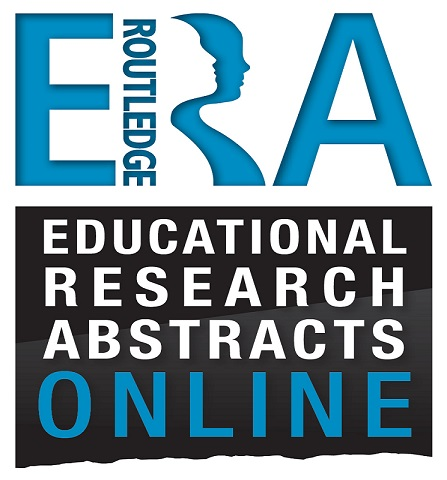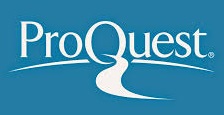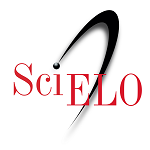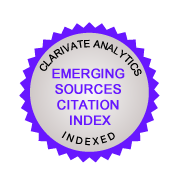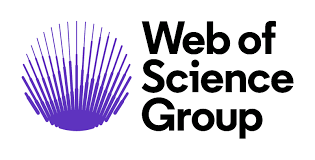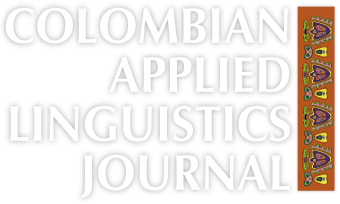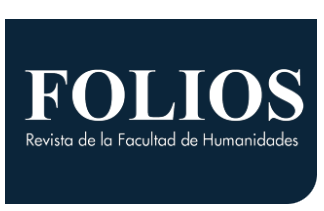English Language Teachers’ Perceptions on Knowing and Applying Contemporary Language Teaching Techniques
Percepciones de docentes de inglés sobre el conocimiento y aplicación de técnicas contemporáneas para la enseñanza de idiomas
DOI:
https://doi.org/10.15446/profile.v19n_sup1.68518Keywords:
English language teaching, contemporary teaching techniques, English teachers (en)docentes de inglés, enseñanza del inglés, técnicas contemporáneas de enseñanza (es)
https://doi.org/10.15446/profile.v19n_sup1.68518
English Language Teachers’ Perceptions on Knowing and Applying Contemporary Language Teaching Techniques
Percepciones de docentes de inglés sobre el conocimiento y aplicación de técnicas contemporáneas para la enseñanza de idiomas
Esen Sucuoğlu*
Near East University, Mersin, Turkey
This article was received on September 3, 2017, and accepted on November 7, 2017.
How to cite this article (APA, 6th ed.):
Sucuoğlu, E. (2017). English language teachers’ perceptions on knowing and applying contemporary language teaching techniques. Profile: Issues in Teachers’ Professional Development, 19(Suppl. 1), 65-79. https://doi.org/10.15446/profile.v19n_sup1.68518.
This is an Open Access article distributed under the terms of the Creative Commons license Attribution-NonCommercial-NoDerivatives 4.0 International License. Consultation is possible at http://creativecommons.org/licenses/by-nc-nd/4.0/.
The aim of this study is to determine the perceptions of English language teachers teaching at a preparatory school in relation to their knowing and applying contemporary language teaching techniques in their lessons. An investigation was conducted of 21 English language teachers at a preparatory school in North Cyprus. The SPSS statistical package was used for the data analysis. Frequency and percentages were used to analyse the English language teachers’ knowledge, desire to learn, application of the innovative language techniques in their classrooms, experience of problems as well as teachers’ frequency of technique usage and where they learned these techniques. This study shows that the most known contemporary technique is communicative and less known contemporary language teaching techniques are blended/hybrid.
Key words: English language teaching, contemporary teaching techniques, English teachers.
Este estudio busca determinar las percepciones que profesores de inglés en una escuela preparatoria tienen respecto al conocimiento y aplicación en sus clases de técnicas contemporáneas de enseñanza de idiomas. Los participantes fueron 21 docentes de una escuela prepraratoria en el norte de Chipre. Se utilizó el paquete estadístico SPSS para el análisis de los datos. La frecuencia y porcentajes sirvieron para analizar el conocimiento de los docentes, su deseo de aprender, la aplicación de técnicas innovadoras en sus clases, los problemas detectados, frecuencia del uso y dónde aprendieron dichas técnicas. El estudio muestra que la técnica contemporánea más conocida es la comunicativa y la menos conocida la mixta o híbrida.
Palabras clave: docentes de inglés, enseñanza del inglés, técnicas contemporáneas de enseñanza.
Introduction
For decades researchers have attempted to determine the best methods for providing English language instruction, especially for non-English speaking populations. The focus on English language teaching (ELT) strategies has led to the development of a wide range of approaches that include individualized instruction, group activities, and collaborative learning models (Hubackova, 2016; Kuimova, Uzunboylu, & Golousenko, 2017). Existing research often integrates multiple approaches in its exploration of methods that provide the greatest level of success for language knowledge. Current approaches include communicative, constructivist, reflective, web-based, blended/hybrid, neurolinguistic programming, cooperative/collaborative, content-based, task-based, differentiated, participatory, multiple intelligences, project-based, strategies-based, and problem-based language teaching. Research into the connection between these approaches and learner outcomes relate benefits when applied to different learner populations. In some cases, researchers have explored just one or two of the methods, while others have explored single approaches with assessments before and after the application of the teaching strategy.
The main aim of this study is to determine the perceptions of the English language teachers regarding to what extend they are aware of the contemporary language teaching techniques and to what level they apply these techniques in their classess.
Literature Review
Communicative Language Teaching
Communicative language teaching (CLT) is an instructional approach that focuses on interactions in the target language to support the authentic adaptation of language (Mohammed, Sidek, & Murad, 2016). In addition, Ellis (2015) studied the application of CLT in the development of language skills, but considered two different approaches frequently used. Ellis looked at the differences between “focus-on-forms” and “focus-on-form” as they apply to systems of communicative instruction. The first, focus-on-forms, requires instruction that focuses on grammatical learning in which learners are instructed in the correct forms of language in the hope that they can then apply these to communicative interactions. Ellis argued that this type of approach assumes that the learner can transfer non-communicative learning of forms to language-based interactions, which does not always occur. Instead, Ellis emphasizes the value of focusing on the correct forms used in language expression so that learners can develop a sense of the sound of correct language.
Focus-on-form, the second, is a strategy in CLT through which the instructor reflects on correction of the communications that occur rather than instruction in grammar. Learning must then be transferred to communicative interactions. Ellis (2015) maintained that focus-on-form allows for the correction of communication and the facilitation of error correction during language learning and supports the continuation of a communicative task. This contradicts some traditional views that teachers should not take action when a student is performing a communicative task. Ellis argued that focus-on-form and focus-on-forms do not have to be mutually exclusive, but could be complementary elements in a communicative language process.
Constructivist Language Teaching
The constructivist approach to language teaching is linked to the belief that students develop understanding of language through their experiences, which in many cases should be influenced by the students’ views and interests. Rather than using traditional approaches to develop language around rote learning and repetition, the constructivist approach seeks ways to authenticate language learning by determining how students can engage in and be a part of the language learning experience. Wang (2014) maintained that language educators can promote the acquisition of language skills by providing students with language opportunities through which they integrate their own interests and perspectives into the language learning process.
Wang (2014) further claims that language learners can benefit from the use of different online mechanisms to support a constructivist approach to developing language skills. Wang proposed the use of wikis and collaboration between peers in online forum to help learners develop, modify, and advance their language skills. In particular, Wang looked at the use of wikis so that individual learners could collaborate with others in the creation of wikis and could improve their writing skills and vocabulary through peer-based support. Wang found that most of the students studied developed a high level of language engagement through the use of this constructivist approach in which the learners formed specific collaborative interactions of their own choosing. The wiki-mediated environment ensured that learners were engaged in the learning process and maintained continued interest in the topics they selected. The social interactions were a powerful learning tool for the adaptation of written language skills.
Reflective Language Teaching
Researchers, including Pickering (2007) and Pennington and Hoekje (2014), have recognized the value of reflective learning strategies as a means of enhancing language understanding and engaging learners. Pickering maintained the value of using tools, including learner diaries, self-evaluation tools, and peer assessments as the basis for developing and facilitating reflective learning. This is linked to the belief that learners are best able to determine what their needs are and where their limitations lie. Subsequently, the educator can benefit from creating an interaction with learners that fosters exploration of potential and needs through a self-evaluation process (Pickering, 2007).
The aim of reflective language teaching is to advance the learners’ capacity for self-evaluation and autonomous learning (Pickering, 2007). Pennington and Hoekje (2014) also maintained the value of reflective practices, arguing that language is valuable when it is developed within a context that is pertinent to the understanding and perceptions of the learner, especially in regard to the priority for language learning. Subsequently, learners benefit from processes that require they examine their own process of language adaptation (Pennington & Hoekje, 2014). In alignment with this view, it is evident that the English language teaching that allows for a continuous process of personal assessment is beneficial because it not only defines strengths and weaknesses, but shapes the learners’ understanding of their progress over time.
Web-Based Language Teaching
Web-based language teaching has been identified as a significant means of exploring different topics in language development and improving writing proficiency for English language learners (Magal-Royo & García-Laborda, 2017). Web-based language teaching can include a variety of different approaches to instruction, including explorative and interactive approaches that promote improvements in language acquisition (Bikowski & Vithanage, 2016; García-Laborda, Magal Royo, Litzler, & Giménez López, 2014). Bikowski and Vithanage (2016) evaluated the use of a web-based collaborative writing task during in-class instruction in English language skills and found distinct benefits over this approach. These authors collected a range of different types of data, including assessments, surveys, interviews, and observations as a means of determining how learners engaged in web-based collaborative writing tasks. When compared to traditional classroom writing instruction, Bikowski and Vithanage found that learners valued the collaborative experience and found the web-based approach engaging. Before and after assessments of their performance on writing tasks also showed measurable improvements.
The use of web-based tools, including those that improve communication, support clarity in expression, and promote learner engagement, was perceived as a beneficial step in improving English language acquisition (Bicen & Uzunboylu, 2013; Bikowski & Vithanage, 2016; Ozcan & Genc, 2016). The web-based approach, which expanded upon more common computer-assisted language learning (CALL), fostered the use of interactive media and collaboration that enhanced learning opportunities and direct communication. Coordinated measures to enhance collaboration supported improvements in individuals integrating new English language skills (Baglama, Yikmis, & Demirok, 2017; Bikowski & Vithanage, 2016).
Blended/Hybrid Language Teaching
Increasingly, interest in online teaching has led to the focus on hybrid or blended instruction. While some educators focus on one or the other of these approaches, supporters of blended or hybrid instructional modalities believe that it is just a matter of time before this will become the most prevalent approach for instruction (McNeil, 2016). McNeil (2016) and Akyol and Garrison (2011) recognized that online learning methods have both benefits and drawbacks, but educator experience with the hybrid modality improves the quality of instruction (McNeil, 2016). Preparing educators in English language instruction for the use of blended or hybrid approaches enhances the opportunity for learner success. McNeil (2016) maintained that the benefits of hybrid or blended instruction come from the fact that it can be used to individualize instruction and allow learners at a higher level of proficiency to develop their skills further than can their lower level peers. Contrary to popular belief, McNeil also maintains that it is important for educators to recognize that hybrid instructional modalities are not a replacement for instructional process, but another way of delivering instruction. Subsequently, professional development and understanding of the instructional paradigm is essential to creating beneficial experiences for learners (McNeil, 2016). For example, McNeil argued that hybrid learning experiences require educators to develop more learner-centered elements in their instruction, rather than less. Because of the loss of face-to-face time with learners, instructors need to develop systems through which they engage and work with individuals in a manner that seems authentic. Though hybrid systems may be more convenient for learners and provide more opportunities for instruction, they are not inherently easier to develop or implement than their classroom-based counterparts.
Neurolinguistic Programming Approaches
Neurolinguistic programming (NLP) approaches can be used in the context of English language instruction as a means of addressing some of the issues that learners face in the instructional environment (Lashkarian & Sayadian, 2015). It is not uncommon for English language learners to experience a broad range of responses to the instructional process, including anxiety that can hinder their capacity for self-improvement (Lashkarian & Sayadian, 2015). Lashkarian and Sayadian (2015) studied the application of NLP techniques in the classroom setting to improve attitudes and motivation for learning for 60 junior high school students in Iran. These researchers demonstrated the use of NLP techniques to bolster student attitudes and motivation for learning and to improve testing performance on language acquisition skills.
Lashkarian and Sayadian (2015) recognized the importance of assessing student learners who experienced NLP techniques and those who were provided with traditional instruction aligned with a textbook. The researchers provided 12 weeks of instruction to two different student groups and assessed the student performance prior to the instruction and then after the 12 weeks were completed. The outcomes of their study showed that the nlp approaches that were applied to relieve anxiety and improve attitudes towards learning were beneficial (Lashkarian & Sayadian, 2015). Not only did student performance on assessments improve when comparing the two groups, but educator reports, as measured through a teacher questionnaire survey, showed improvement in communication, motivation, and anxiety (Lashkarian & Sayadian, 2015).
Cooperative/Collaborative Language Teaching
Because communication is often a collaborative process through which give and take is necessary, researchers have explored the benefits of using cooperative learning and collaborative teaching techniques in language instruction (Mohammed & Mahmoud, 2014; Ozdamli & Tavukcu, 2016). Mohammed and Mahmoud (2014) studied the application of a cooperative language learning (CLL) approach to advance the language acquisition skills of second-year university students in Saudi Arabia. A key aspect of this program was the use of peer collaboration as an essential part of the development of written language skills, one of the weak areas for this population. These authors argued in favor of the use of CLL approaches to enhance the writing skills of learners through personal interactions, self-assessments, and encouragement towards developing linguistic competence.
Though collaborative and cooperative language instruction approaches can be aligned with outcomes that show improved vocabulary performance and improved language understanding, competency in written language performance varies significantly. Mohammed and Mahmoud (2014) recognized that not all students demonstrated high levels of performance improvement through the application of CLL approaches. In fact, many still made significant errors and did not always demonstrate adaptations to their written language. The outcomes of the study by Mohammed and Mahmoud still support the general assertion of benefits derived from CLL approaches to instruction in post-secondary language learners, but they underscored the importance of creating collaborative relationships that are beneficial to both sides of the cooperative assignment.
Content-Based Language Teaching
Content-based instruction focuses on aligning specific goals and language objectives to instructional content (Bigelow, Dahlman, & Ranney, 2006). This approach is defined by the premise that language objectives should be clearly defined and content should be aligned with these objectives in order to determine if substantial change occurs as a result of the instructional process. In language instruction, it is especially important to understand the expectations related to content to provide an evaluative process.
Content-based language teaching not only requires the development of objectives, but the creation of a link between content and the approaches to meeting those objectives (Bigelow et al., 2006). Lesson planning and curriculum development have to be aligned with expected goals. Subsequently, academic content in instruction that is based on English language learning must define the areas of proficiency that will be a part of the curriculum development for each class, and should align connections with educator planning (Bigelow et al., 2006).
Bigelow et al. (2006) maintained that one of the challenges in this approach is that sometimes content overshadows the learning process. Specifically, educators may be driven by the content rather than by the obtaining of learning objectives. Subsequently, these researchers maintained that teachers need to look at language learning and actual acquisition skills as a primary component of the learning objectives in order to create content and planning through which these skills can be obtained.
Task-Based Language Teaching
Lee (2016) recognized that there is an increasing focus on online learning opportunities, especially in relation to language learning. In alignment with this view, Lee also argued the value of implementing task-based learning instruction in order to achieve the best outcomes for learners in this kind of growing instructional environment. This author maintained that benefits can be derived from instructional content that focuses on autonomous learning strategies in the online environment through task-based instruction.
Lee (2016) studied the use of skill-integrated tasks by a group of learners in order to assess their perceptions of the instructional process. This researcher used a variety of data collection methods to evaluate the impacts of this approach for elementary language instructional courses. Lee maintained that learners who participated in structured courses were able to work independently and obtain specific information from this kind of instructional format. Subsequent engagement was often found to be beneficial when used in conjunction with this approach.
Lee’s (2016) study was interesting because it demonstrated that different types of tasks can be presented in online formats with varying degrees of success. Digital technologies and new methods of communication provide a foundation for creating engagement with learners (Lake & Ross, 2015). At the same time, the use of technology can be distancing for learners who have not had a considerable level of experiencing with online or computer-based instruction (Basöz & Can, 2016; Uzunboylu, Hursen, Ozuturk, & Demirok, 2015). The benefits of this modality are directly linked to familiarity with computer-based instruction, a reflection shared by many introducing new approaches to instruction in primarily traditional educational environments.
Differentiated Language Teaching
Pilat, Solomintserva, Shevchenko, Svintorzhitskaja, and Ermakova (2014) studied the introduction of foreign language instruction as a major component of Russian higher education as a means of understanding factors that can influence instruction and the underlying reason for differentiated learning techniques. These researchers maintained that in many countries, students leave higher education with a sufficient level of language proficiency in English to participate in communicative tasks outside of the school setting. At the same time, they also recognized that many do not have the necessary skills or accuracy in either understanding or language expression to take part in authentic interactions with English language speakers. The main reason for disparities is that there are different levels of motivation, different reasons for learning, and different mandatory levels of performance.
Pilat et al. (2014) went on to maintain that benefits can be derived from recognizing these variances and creating a more effective approach to language teaching by integrating differentiated strategies. These authors argued that learners may need different levels of support to develop proficiency and to advance their capacity for self-assessment and language development. These elements require educators to understand the different levels of language training, different motivations, and different educational requirements that students may bring to the table.
Participatory Language Teaching
Participatory language teaching reflects the call for a greater level of personalization and methods of engagement in instruction. Al-Seghayer (2014) maintained that this is a major concept being promoted in English teacher preparation programs in other countries, including Saudi Arabia. Al-Seghayer argued that professional development needs to relate the contextual nature of language learning and the benefits from participatory interactions through which learning can be advanced.
Participatory instruction is related to the belief that language is culturally defined and that any measures to develop language aptitude have to reflect cultural collaboration or integration as a part of the learning process. This includes participation that is learner-centred and can help to promote language skill acquisition through a variety of methods. Educators are more successful if they have opportunities to learn this kind of participatory instruction from other professionals or mentors who can help advance their understanding of instructional approaches (Al-Seghayer, 2014).
Multiple Intelligences Language Teaching
The concept of multiple intelligences goes back to the authorship of Howard Gardner (as cited in Ghamrawi, 2014), who believed that learners learned in a variety of different ways. Aptitudes in different areas, including visual, spatial, and musical-rhythmic, could be contrasted with traditional learning modalities. Rote learning approaches are only beneficial to a very small portion of the population, and most learners fall into one of Gardner’s other dimensions of intelligence (there are eight in total).
Ghamrawi (2014) maintained that educators can benefit from applying this theory to the development of language skills at a variety of different educational levels. English language instruction that allows for an understanding of these dimensions promotes learning in different ways that students can explore. English language learning can be introduced in different ways to address the intelligences of all people in the classroom setting (Seker, 2016). This approach improves the ability of learners of different intelligences to take part in the instructional process and improve their overall performance. Subsequently, Ghamrawi maintained that it is important to include multiple intelligences in English as a second language (esl) classrooms, especially when addressing the needs of a varied learner population. Multiple intelligences instructional strategies, including differentiated learning modules based on the different dimensions of intelligence, can promote gains across populations (Ghamrawi, 2014).
Project-Based Language Teaching
Dooly and Sadler (2016) recognized the value of exploring language teaching in a variety of ways. These researchers argued that project-based learning could be applied to English language acquisition by integrating varied technologies and different activities to support the resolution of specific problems. Language teaching then becomes contextualized and the learners express their ideas and perspectives through collaborative partners that can help them understand and resolve specific problems (Dooly & Sadler, 2016).
Dooly and Sadler (2016) further expounded upon this idea by developing an integrated and innovative approach that includes both technology and strategies for improving language function. These researchers explored existing teaching approaches and compared them with project-based language instruction. The belief that students motivated to resolve specific problems will have a greater ability to adapt and integrate language more freely to communicate about the project were essential elements in this study. The exploration of this approach indicated that there are clear links between project-oriented instructional elements and the capacity for integrating authentic language.
Strategies-Based Language Teaching
García Magaldi (2010) maintained that developing a sense of autonomy in language learners is essential to their motivation to continue and their capacity for language adaptation and use. García Magaldi argued that language learning often focuses on the development of self-assessment techniques and the capacity for autonomy both in learning and using the language. Without a level of autonomy that is achieved through the instructional process, learners are unlikely to utilize the language once given an authentic or contextualized opportunity to speak or write.
Strategies-based language teaching looks at specific issues, including autonomy and self-awareness, and seeks methods to support instruction that is based on continued learning outside of the classroom (Abdulhay, 2015; García Magaldi, 2010). García Magaldi (2010) supported the use of learning strategies that promote learner autonomy, improve performance, and look at ways of creating authentic language experiences outside of the classroom. This included promoting an understanding of the use of language with peers and society in general. In order for learners to be autonomous, they must first understand how language impacts how they interact. Subsequently, the author identified major theories about the strategic use of language and methods to support authenticity in the use of language outside of the classroom (García Magaldi, 2010).
Problem-Based Language Teaching
Othman and Shah (2013) explored the use of a problem-based learning approach for students in language classes in order to assess its impact on conveying necessary content and in the development of language skills. This study related the impacts of this approach on 128 students, divided into two groups, one of which received traditional text-related instruction and the other receiving problem-based language teaching. The outcomes of the study showed significant improvements in the performance of learners who received problem-based instruction, especially in tasks that were related to writing.
This approach reflects the belief that critical thinking skills are essential to language acquisition. This is less related to the development of grammar systems and more to the content and context in which language develops. Othman and Shah (2013) argued the value of understanding the importance of exploring different ways of communicating information as a part of the development of communication skills. The use of real life problems as a foundation for communication creates a greater degree of authenticity in the development of language skills. The integration of critical thinking skills into the development of language becomes an essential step in this process that advances vocabulary learning and fluency.
Method
Research Design
The research is a quantitative descriptive research project that aims to determine the perceptions of English language teachers teaching at the preparatory school of Near East University in relation to their knowing and applying innovative language techniques in their lessons.
Population and Samples
Samples were selected randomly among the English language teachers teaching at the preparatory school in Near East University. The investigation was conducted with 21 English language teachers at the Near East University preparatory school in North Cyprus.
Instrumentation
As an instrumentation of this study, a questionnaire in relation to taking perceptions of English language teachers regarding whether they know about and apply innovative language techniques in their classrooms was conducted with 21 English language teachers teaching at the Preparatory school of Near East University. The researcher developed the questionnaire by herself.
Data Analysis
Data were analyzed using the SPSS statistical package. Frequency and percentages were used to analyze the English language teachers’ knowledge, desire to learn, application of the innovative language techniques in their classrooms, experience with problems as well as teachers’ usage frequency and where they learned these techniques. There are 15 sections and 6 sub-questions in each section.
Findings
As shown in Table 1, 95.2% of the English language teachers are aware of CLT. One of them indicated that s/he desired to learn about this technique. The majority of the teachers are not even aware of the technique. Eight teachers reported that they want to learn about this technique whereas four do not desire to learn about it. More than half (61.9%) of the teachers indicated that they know about the reflective language teaching technique. Nearly half of them do not want to learn about the technique. This finding is quite interesting. It is worth searching whether the reason is the technique itself or the teachers’ unwillingness to learn about it. Nearly all of the teachers (95.2%) are aware of the web-based language teaching technique. One of them indicated that s/he does not desire to learn about this technique. Very few of the teachers (14.3%) are aware of the blended/hybrid language teaching technique. This is a very small percentage. Most of the teachers are not aware of this technique. However, the number of teachers desiring to learn this technique is really small. Half of the teachers do not desire to learn this technique. Seventy-one point four percent of the teachers are aware of the NLP language teaching technique. Among those who do not know about the technique, one indicated that s/he is willing to learn about the technique. Seventy-six point two percent of the teachers know about the cooperative/collaborative language teaching technique; whereas two of the teachers do not want to learn about the technique. Nearly all of the teachers (81%) know about the content-based language teaching technique. Only one of the teachers desires to learn about the technique whereas the majority of them do not want to know about the technique. Eighty-five point seven percent of the participants are aware of the task-based language teaching technique. Among those who do not know about the technique, only one of them wants to learn about it. Thirty-eight point one percent of the teachers are aware of the differentiated language teaching technique. Those who are not aware of the technique do not want to learn the technique. Nearly half of the English language teachers (47.6%) know about the participatory language teaching technique. Among those who do not know about the technique, three of them reported that they do not desire to learn about it. Seventy-one point four per cent of the teachers know about the multiple intelligences language teaching technique. Among those who do not know about the technique, one of them reported that s/he does not desire to learn about it. Seventy-one point four per cent of the participants are aware of the project-based language teaching technique. Among those who do not know about the technique, half of them reported that they do not want to learn about it. Nearly half of the teachers (42.9%) know about the strategies-based language teaching technique. Among those who do not know about the technique, four of them reported that they do not want to learn about it. Seventy-one point four per cent of the teachers know about problem-based language teaching technique. Among those who do not know about the technique, the majority of them reported that they do not desire to learn about it.
As shown in Table 2, the most used innovative language technique is communicative language teaching technique and the least used is multiple intelligences language teaching technique. Constructivist language teaching, project-based language teaching, and blended/hybrid language teaching techniques are also favorable.
English language teachers can face difficulties while applying innovative language techniques. However, Table 3 reveals that the participants of this study do not face many difficulties. As the most known and applied technique, teachers face less difficulties while applying communicative language technique. Most difficulties are experienced while applying constructivist and NLP language teaching techniques.
Table 4 shows that 50% of the participants indicated that they always apply the blended/hybrid language teaching technique in their lessons. Similarly, 55% of them reported that they often use communicative language teaching in their studies. Furthermore, 42.9% of the language teachers said that they sometimes apply the cooperative/collaborative language teaching technique in their classrooms.
Table 5 shows that, apart from web-based, NLP, and blended/hybrid innovative language teaching techniques, the participants had been familiar with the other techniques while they were undergraduate students. Teachers got their familiarity with web-based and NLP language teaching techniques mostly from seminars. On the other hand, participants had become familiar with the blended/hybrid language teaching technique equally while they were an undergraduate student and while they attended seminars
Conclusion
Existing studies on the use of a variety of language teaching systems demonstrate the range of ways that language skills can be developed. Fostering positive learning environments is an essential component of most of the current approaches to instruction. Some of the prevalent approaches used in English language instruction include: communicative, constructivist, reflective, web-based, blended/hybrid, NLP, cooperative/collaborative, content-based, task-based, differentiated, participatory, multiple intelligences, project-based, strategies-based, and problem-based language teaching. Generally, web-based and hybrid systems are gaining increasing attention because of the prevalence of computer-based systems in classrooms. In addition, task-based and problem-based learning instructions strive to integrate new ways of adapting language and creating a context within which language learning can occur.
This study shows that the five most known innovative techniques are communicative (95.2%), web-based (85.7%), task-based (85.7%), content-based (81%) and cooperative/collaborative (76.2%) language teaching techniques. On the other hand, the five least known innovative language teaching techniques are blended/hybrid (14.3%), differentiated (38.1%), constructivist (42.9%), strategies-based (42.9%) and participatory (47.6%) language teaching techniques. Teachers’ desires to learn these techniques are low; in other words, these techniques are less known and teachers do not want to learn about them.
The most known and applied language teaching techniques are communicative, problem-based, and project-based innovative techniques. The participants of this study stated that they do not face many difficulties. The most known and applied technique that teachers face less difficulties with while applying is the communicative language technique. Most of the difficulties are experienced while applying the constructivist and NLP language teaching techniques. In this sense, undergraduate education is really important. As long as the curriculum of undergraduate studies is innovated, teachers become more active in their classrooms. Similarly, seminars are important sources for teachers to renew and develop themselves.
References
Abdulhay, H. (2015). Effectiveness of strategy instruction for vocabulary learning: A narrative review. Contemporary Educational Researches Journal, 5(2), 47-54. https://doi.org/10.18844/cerj.v5i2.234.
Akyol, Z., & Garrison, D. R. (2011). Understanding cognitive presence in an online and blended community of inquiry: Assessing outcomes and processes for deep approaches to learning. British Journal of Educational Technology, 42(2), 233-250. https://doi.org/10.1111/j.1467-8535.2009.01029.x.
Al-Seghayer, K. S. (2014). The actuality, inefficiency, and needs of EFL teacher preparation programs in Saudi Arabia. International Journal of Applied Linguistics & English Literature, 3(1), 143-151. https://doi.org/10.7575/aiac.ijalel.v.3n.1p.143.
Baglama, B., Yikmis, A., & Demirok, M. S. (2017). Special education teachers’views on using technology in teaching mathematics. European Journal of Special Education Research, 2(5), 120-134.
Basöz, T., & Can, D. T. (2016). The effectiveness of computers on vocabulary learning among preschool children: A semiotic approach. Cypriot Journal of Educational Sciences, 11(1), 2-8. https://doi.org/10.18844/cjes.v11i1.266.
Bicen, H., & Uzunboylu, H. (2013). The use of social networking sites in education: A case study of Facebook. Journal of Universal Computer Science, 19(5), 658-671.
Bigelow, M., Dahlman, A., & Ranney, S. (2006). Keeping the language focus in content-based esl instruction through proactive curriculum-planning. TESL Canada Journal, 24(1), 40-58. https://doi.org/10.18806/tesl.v24i1.27.
Bikowski, D., & Vithanage, R. (2016). Effects of web-based collaborative writing on individual L2 writing development. Language Learning & Technology, 20(1), 79-99. Retrieved from http://llt.msu.edu/issues/february2016/bikowskivithanage.pdf.
Dooly, M., & Sadler, R. (2016). Becoming little scientists: Technologically-enhanced project-based language learning. Language Learning & Technology, 20(1), 54-78. Retrieved from http://llt.msu.edu/issues/february2016/doolysadler.pdf.
Ellis, R. (2015). The importance of focus on form in communicative language teaching. Eurasian Journal of Applied Linguistics, 1(2), 1-12.
García-Laborda, J., Magal Royo, T., Litzler, M. F., & Giménez López, J. L. (2014). Mobile phones for Spain’s university entrance examination language test. Journal of Educational Technology & Society, 17(2), 17-30.
García Magaldi, L. (2010). Metacognitive strategies-based instruction to support learner autonomy in language learning. Revista Canaria de Estudios Ingleses, 61(1), 73-86.
Ghamrawi, N. (2014). Multiple intelligences and ESL teaching and learning: An investigation in KG II classrooms in one private school in Beirut, Lebanon. Journal of Advanced Academics, 25(1), 25-46. https://doi.org/10.1177/1932202X13513021.
Hubackova, S. (2016). The importance of foreign language education. New Trends and Issues Proceedings on Humanities and Social Sciences, 2(5),98-101.
Kuimova, M. V., Uzunboylu, H., & Golousenko, M. A. (2017). Foreign language learning in promoting students’ spiritual and moral values. Ponte, 73(4), 263-267. https://doi.org/10.21506/j.ponte.2017.4.56.
Lake, C., & Ross, S. M. (2015). Technology-enhanced instruction in learning world languages: The middlebury interactive learning program. World Journal on Educational Technology, 7(1), 42-62. https://doi.org/10.18844/wjet.v7i1.23.
Lashkarian, A., & Sayadian, S. (2015). The effect of neuro linguistic programming (NLP) techniques on young Iranian EFL learners’ motivation, learning improvement, and on teacher’s success. Procedia: Social and Behavioral Sciences, 199(3), 510-516. https://doi.org/10.1016/j.sbspro.2015.07.540.
Lee, L. (2016). Autonomous learning through task-based instruction in fully online language courses. Language Learning & Technology, 20(2), 81-97. Retrieved from http://llt.msu.edu/issues/june2016/lee.pdf.
Magal-Royo, T., & García-Laborda, J. (2017). Multimodal interactivity in foreign language testing. In D. Dahl (Ed.), Multimodal interaction with W3C standards: Towards natural user interfaces to everything (pp. 351-365). New York, US: Springer. https://doi.org/10.1007/978-3-319-42816-1_16.
McNeil, M. (2016). Preparing teachers for hybrid and online language instruction. Issues and Trends in Educational Technology, 4(1). Retrieved from https://journals.uair.arizona.edu/index.php/itet/article/view/18725/19066.
Mohammed, L. A., Sidek, H. M., & Murad, A. S. (2016). est reading instructional approaches at the senior secondary school level in Yemen: A case study. International Journal of Learning and Teaching, 8(4), 224-235. https://doi.org/10.18844/ijlt.v8i4.599.
Mohammed, M., & Mahmoud, A. (2014). The effectiveness of using the cooperative language learning approach to enhance EFL writing skills among Saudi University students. Journal of Language Teaching and Research, 5(3), 616-625.
Othman, N., & Shah, M. I. (2013). Problem-based learning in the English language classroom. English Language Teaching, 6(3), 125-134. https://doi.org/10.5539/elt.v6n3p125.
Ozcan, D., & Genc, Z. (2016). Pedagogical formation education via distance education. Eurasia Journal of Mathematics, Science & Technology Education, 12(2), 347-360.
Ozdamli, F., & Tavukcu, T. (2016). Determination of secondary school students’ attitudes towards tablet pc supported education. Journal of Universal Computer Science, 22(1), 4-15.
Pennington, M. C., & Hoekje, B. J. (2014). Framing English language teaching. System, 46, 163-175. https://doi.org/10.1016/j.system.2014.08.005.
Pickering, A. (2007). Facilitating reflective learning: An example of practice in TESOL teacher education. Centre for Language, Linguistics & Area Studies. Retrieved from https://www.llas.ac.uk/resources/gpg/2395.html.
Pilat, L. P., Solomintserva, O. V., Shevchenko, E. M., Svintorzhitskaja, I. A., & Ermakova, L. I. (2014). Factors affecting the foreign language teaching quality for the students of the Russian non-linguistic higher educational institutions. Life Science Journal, 11(11s), 34-38.
Seker, E. (2016). Multiple language learning. Global Journal of Foreign Language Teaching, 6(4), 196-205. https://doi.org/10.18844/gjflt.v6i4.1670.
Uzunboylu, H., Hursen, C., Ozuturk, G., & Demirok, M. (2015). Determination of Turkish university Students’ attitudes for mobile integrated EFL classrooms in North Cyprus and scale development: ELLMTAS. Journal of Universal Computer Science, 21(10), 1283-1296.
Wang, Y.-C. (2014). Using wikis to facilitate interaction and collaboration among EFL learners: A social constructivist approach to language teaching. System, 42, 383-390. https://doi.org/10.1016/j.system.2014.01.007.
About the Author
Esen Sucuoğlu studied English language teaching at Near East University, Turkey. He holds an MA in English language teaching and a PhD in educational administration, supervision, planning, and economics from the same university.
References
Abdulhay, H. (2015). Effectiveness of strategy instruction for vocabulary learning: A narrative review. Contemporary Educational Researches Journal, 5(2), 47-54. http://dx.doi.org/10.18844/cerj.v5i2.234.
Akyol, Z., & Garrison, D. R. (2011). Understanding cognitive presence in an online and blended community of inquiry: Assessing outcomes and processes for deep approaches to learning. British Journal of Educational Technology, 42(2), 233-250. https://doi.org/10.1111/j.1467-8535.2009.01029.x.
Al-Seghayer, K. S. (2014). The actuality, inefficiency, and needs of EFL teacher preparation programs in Saudi Arabia. International Journal of Applied Linguistics & English Literature, 3(1), 143-151. https://doi.org/10.7575/aiac.ijalel.v.3n.1p.143.
Baglama, B., Yikmis, A., & Demirok, M. S. (2017). Special education teachers’views on using technology in teaching mathematics. European Journal of Special Education Research, 2(5), 120-134.
Basöz, T., & Can, D. T. (2016). The effectiveness of computers on vocabulary learning among preschool children: A semiotic approach. Cypriot Journal of Educational Sciences, 11(1), 2-8. https://doi.org/10.18844/cjes.v11i1.266.
Bicen, H., & Uzunboylu, H. (2013). The use of social networking sites in education: A case study of Facebook. Journal of Universal Computer Science, 19(5), 658-671.
Bigelow, M., Dahlman, A., & Ranney, S. (2006). Keeping the language focus in content-based esl instruction through proactive curriculum-planning. TESL Canada Journal, 24(1), 40-58. https://doi.org/10.18806/tesl.v24i1.27.
Bikowski, D., & Vithanage, R. (2016). Effects of web-based collaborative writing on individual L2 writing development. Language Learning & Technology, 20(1), 79-99. Retrieved from http://llt.msu.edu/issues/february2016/bikowskivithanage.pdf.
Dooly, M., & Sadler, R. (2016). Becoming little scientists: Technologically-enhanced project-based language learning. Language Learning & Technology, 20(1), 54-78. Retrieved from http://llt.msu.edu/issues/february2016/doolysadler.pdf.
Ellis, R. (2015). The importance of focus on form in communicative language teaching. Eurasian Journal of Applied Linguistics, 1(2), 1-12.
García-Laborda, J., Magal Royo, T., Litzler, M. F., & Giménez López, J. L. (2014). Mobile phones for Spain’s university entrance examination language test. Journal of Educational Technology & Society, 17(2), 17-30.
García Magaldi, L. (2010). Metacognitive strategies-based instruction to support learner autonomy in language learning. Revista Canaria de Estudios Ingleses, 61(1), 73-86.
Ghamrawi, N. (2014). Multiple intelligences and ESL teaching and learning: An investigation in KG II classrooms in one private school in Beirut, Lebanon. Journal of Advanced Academics, 25(1), 25-46. https://doi.org/10.1177/1932202X13513021.
Hubackova, S. (2016). The importance of foreign language education. New Trends and Issues Proceedings on Humanities and Social Sciences, 2(5),98-101.
Kuimova, M. V., Uzunboylu, H., & Golousenko, M. A. (2017). Foreign language learning in promoting students’ spiritual and moral values. Ponte, 73(4), 263-267. https://doi.org/10.21506/j.ponte.2017.4.56.
Lake, C., & Ross, S. M. (2015). Technology-enhanced instruction in learning world languages: The middlebury interactive learning program. World Journal on Educational Technology, 7(1), 42-62. http://dx.doi.org/10.18844/wjet.v7i1.23.
Lashkarian, A., & Sayadian, S. (2015). The effect of neuro linguistic programming (NLP) techniques on young Iranian EFL learners’ motivation, learning improvement, and on teacher’s success. Procedia: Social and Behavioral Sciences, 199(3), 510-516. https://doi.org/10.1016/j.sbspro.2015.07.540.
Lee, L. (2016). Autonomous learning through task-based instruction in fully online language courses. Language Learning & Technology, 20(2), 81-97. Retrieved from http://llt.msu.edu/issues/june2016/lee.pdf.
Magal-Royo, T., & García-Laborda, J. (2017). Multimodal interactivity in foreign language testing. In D. Dahl (Ed.), Multimodal interaction with W3C standards: Towards natural user interfaces to everything (pp. 351-365). New York, US: Springer. https://doi.org/10.1007/978-3-319-42816-1_16.
McNeil, M. (2016). Preparing teachers for hybrid and online language instruction. Issues and Trends in Educational Technology, 4(1). Retrieved from https://journals.uair.arizona.edu/index.php/itet/article/view/18725/19066.
Mohammed, L. A., Sidek, H. M., & Murad, A. S. (2016). est reading instructional approaches at the senior secondary school level in Yemen: A case study. International Journal of Learning and Teaching, 8(4), 224-235. https://doi.org/10.18844/ijlt.v8i4.599.
Mohammed, M., & Mahmoud, A. (2014). The effectiveness of using the cooperative language learning approach to enhance EFL writing skills among Saudi University students. Journal of Language Teaching and Research, 5(3), 616-625.
Othman, N., & Shah, M. I. (2013). Problem-based learning in the English language classroom. English Language Teaching, 6(3), 125-134. https://doi.org/10.5539/elt.v6n3p125.
Ozcan, D., & Genc, Z. (2016). Pedagogical formation education via distance education. Eurasia Journal of Mathematics, Science & Technology Education, 12(2), 347-360.
Ozdamli, F., & Tavukcu, T. (2016). Determination of secondary school students’ attitudes towards tablet pc supported education. Journal of Universal Computer Science, 22(1), 4-15.
Pennington, M. C., & Hoekje, B. J. (2014). Framing English language teaching. System, 46, 163-175. http://dx.doi.org/10.1016/j.system.2014.08.005.
Pickering, A. (2007). Facilitating reflective learning: An example of practice in TESOL teacher education. Centre for Language, Linguistics & Area Studies. Retrieved from https://www.llas.ac.uk/resources/gpg/2395.html.
Pilat, L. P., Solomintserva, O. V., Shevchenko, E. M., Svintorzhitskaja, I. A., & Ermakova, L. I. (2014). Factors affecting the foreign language teaching quality for the students of the Russian non-linguistic higher educational institutions. Life Science Journal, 11(11s), 34-38.
Seker, E. (2016). Multiple language learning. Global Journal of Foreign Language Teaching, 6(4), 196-205. https://doi.org/10.18844/gjflt.v6i4.1670.
Uzunboylu, H., Hursen, C., Ozuturk, G., & Demirok, M. (2015). Determination of Turkish university Students’ attitudes for mobile integrated EFL classrooms in North Cyprus and scale development: ELLMTAS. Journal of Universal Computer Science, 21(10), 1283-1296.
Wang, Y.-C. (2014). Using wikis to facilitate interaction and collaboration among EFL learners: A social constructivist approach to language teaching. System, 42, 383-390. https://doi.org/10.1016/j.system.2014.01.007.
How to Cite
APA
ACM
ACS
ABNT
Chicago
Harvard
IEEE
MLA
Turabian
Vancouver
Download Citation
CrossRef Cited-by
1. Diana Carolina Durán-Bautista. (2019). Innovative Trends in Flipped Teaching and Adaptive Learning. Advances in Educational Technologies and Instructional Design. , p.110. https://doi.org/10.4018/978-1-5225-8142-0.ch006.
2. Nathanael Rudolph, Ali Fuad Selvi, Bedrettin Yazan. (2019). Destabilizing Critical “Assumptions” in (English) Language Teaching: An Introduction. Journal of Language, Identity & Education, 18(6), p.349. https://doi.org/10.1080/15348458.2019.1671194.
Dimensions
PlumX
Article abstract page views
Downloads
License
Copyright (c) 2017 Profile: Issues in Teachers' Professional Development

This work is licensed under a Creative Commons Attribution-NonCommercial-NoDerivatives 4.0 International License.
You are authorized to copy and redistribute the material in any medium or format as long as you give appropriate credit to the authors of the articles and to Profile: Issues in Teachers' Professional Development as original source of publication. The use of the material for commercial purposes is not allowed. If you remix, transform, or build upon the material, you may not distribute the modified material.
Authors retain the intellectual property of their manuscripts with the following restriction: first publication is granted to Profile: Issues in Teachers' Professional Development.










